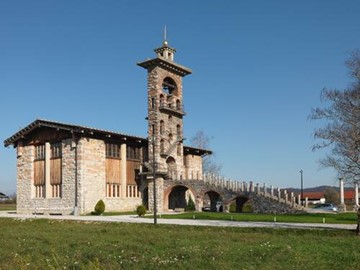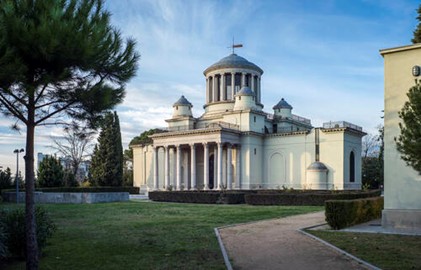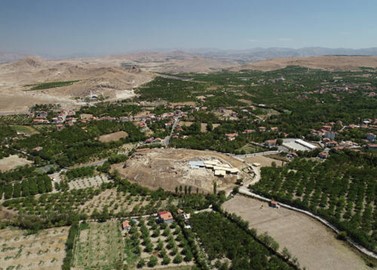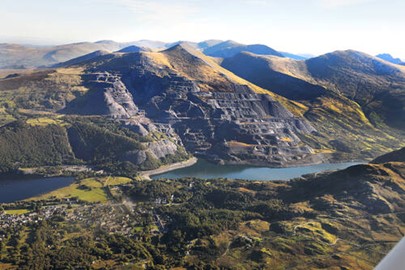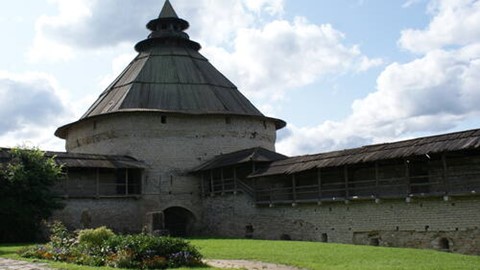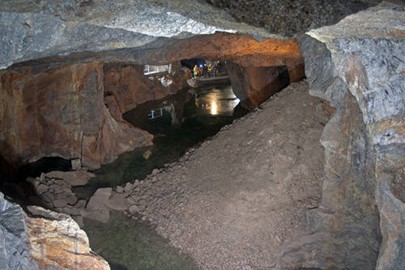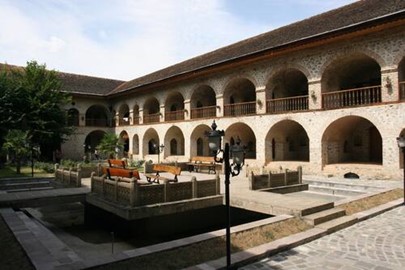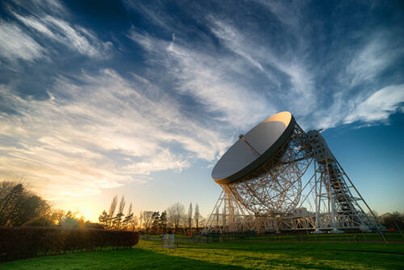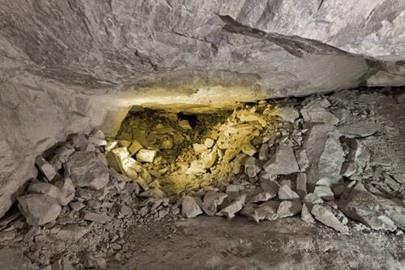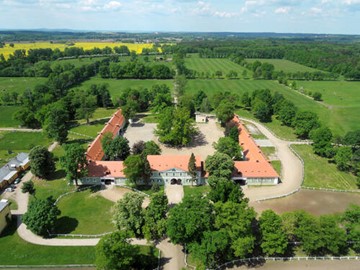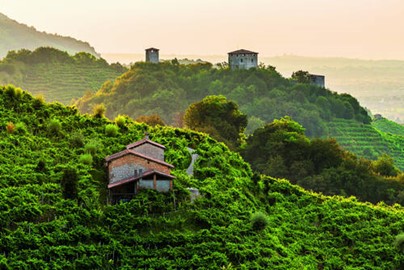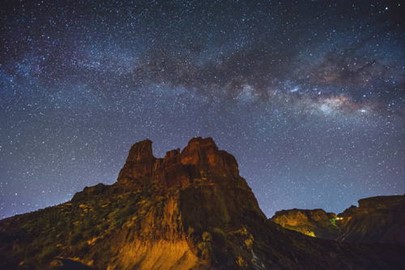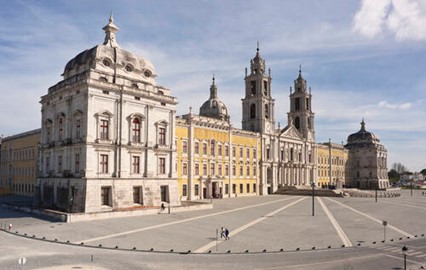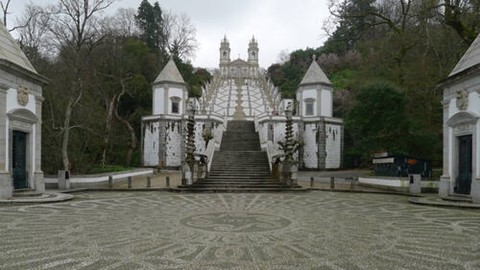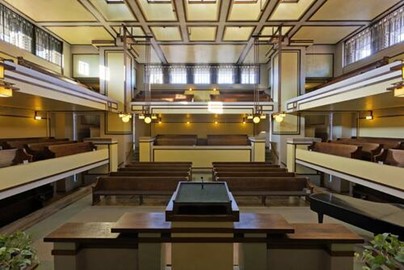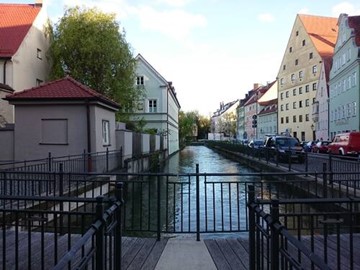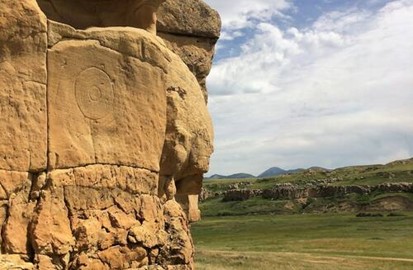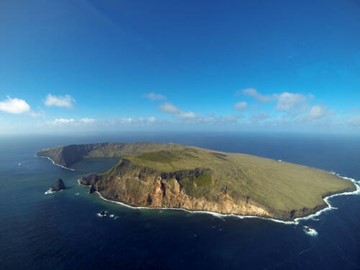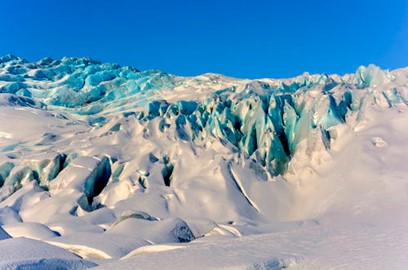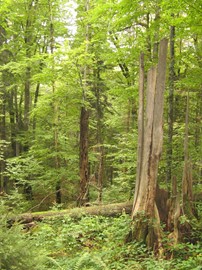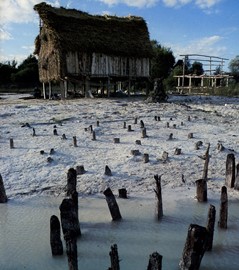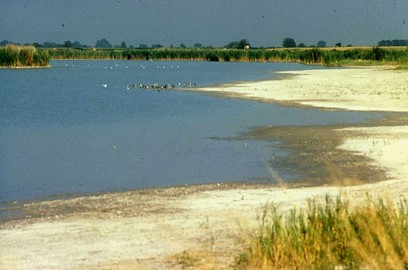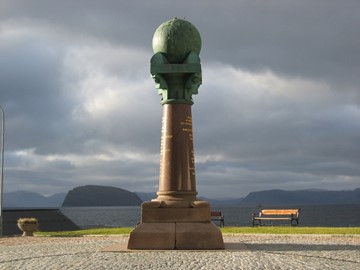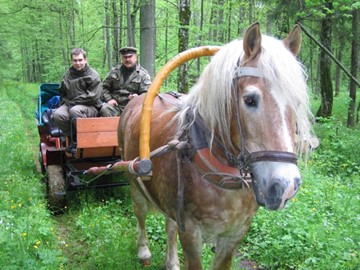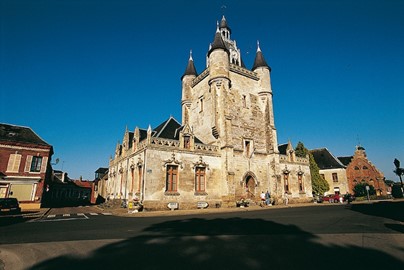region :: europe and north america
Ljubljana
The Works of Jože Plečnik in Ljubljana, a UNESCO World Heritage site in Slovenia, recognized in 2021, are a collection of urban designs by architect Jože Plečnik, transforming Ljubljana from 1921 to 1957. His visionary projects, including the Triple Bridge, Central Market, and landscaped riverbanks, blend classical influences with modernist simplicity, creating a human-centric cityscape. Reflecting Slovenia’s cultural identity, these works showcase Plečnik’s innovative approach to architecture and urban pla... Read More
Paseo del Prado and Buen Retiro
Paseo del Prado and Buen Retiro, a UNESCO World Heritage site in Spain, recognized in 2021, is a historic urban landscape in Madrid blending culture, nature, and science from the 16th century onward. The tree-lined Paseo del Prado, Spain’s first public promenade, links iconic museums like the Prado with the lush Buen Retiro Park, a former royal retreat turned public garden. This integrated design reflects Enlightenment ideals, showcasing Spain’s pioneering approach to urban planning and leisure, enriched by... Read More
Arslantepe Mound
Arslantepe Mound, a UNESCO World Heritage site in Turkey, recognized in 2021, is a 5,000-year-old archaeological tell near Malatya, tracing human settlement from the 4th millennium BCE to the Roman era. This ancient site reveals the rise of early state societies with mudbrick palaces, a temple, and the world’s oldest swords, reflecting advanced metallurgy and governance. Known as the 'Lion Hill' for its Hittite lion statues, Arslantepe offers a key window into Turkey’s prehistoric urban development and cult... Read More
The Slate Landscape of Northwest Wales
The Slate Landscape of Northwest Wales, a UNESCO World Heritage site in the UK, recognized in 2021, is a historic industrial region in Gwynedd shaped by slate quarrying from the 18th to 20th centuries. Featuring dramatic quarries, railways, and workers’ villages, it powered the global roofing slate trade, with sites like Penrhyn and Dinorwig showcasing innovative engineering and rugged beauty. This cultural landscape reflects Wales’ industrial heritage and social history, highlighting the resilience of comm... Read More
Churches of the Pskov School of Architecture
The Churches of the Pskov School of Architecture, a UNESCO World Heritage site in Russia, recognized in 2019, are a group of medieval religious buildings in Pskov, dating from the 12th to 17th centuries. Featuring distinctive whitewashed stone structures with bell towers and porches, they reflect a unique regional style that influenced Russian architecture during the Pskov Republic’s independence. These well-preserved churches and monasteries highlight Russia’s cultural and artistic heritage, showcasing loc... Read More
Erzgebirge Mining
Erzgebirge Mining, a UNESCO World Heritage site spanning Czechia and Germany, recognized in 2019, is a historic mining region in the Ore Mountains active from the 12th to 20th centuries. Featuring mines, smelters, and towns like Freiberg and Jáchymov, it showcases medieval to modern mining technology that fueled Europe’s silver, tin, and uranium booms. This cross-border landscape reflects centuries of industrial innovation and cultural exchange, highlighting the region’s pivotal role in shaping European met... Read More
Sheki
The Historic Centre of Sheki, a UNESCO World Heritage site in Azerbaijan, recognized in 2019, is a well-preserved Silk Road city that flourished from the 18th to 19th centuries. Centered around the Khan’s Palace with its vibrant stained-glass shebeke windows, it features stone houses, caravanserais, and bazaars reflecting Caucasian and Persian influences. Nestled in a scenic valley, Sheki’s intact urban fabric showcases Azerbaijan’s rich architectural heritage and its role as a thriving trade and craft hub ... Read More
Jodrell Bank Observatory
Jodrell Bank Observatory, a UNESCO World Heritage site in England, recognized in 2019, is a pioneering radio astronomy facility established in 1945 in Cheshire, renowned for its iconic Lovell Telescope. Built in 1957, this 76-meter dish tracked early space missions and advanced cosmic research, shaping modern astrophysics with discoveries like pulsars. Set in a rural landscape, it reflects England’s scientific legacy, blending cutting-edge technology with historical significance in humanity’s exploration of... Read More
Krzemionki Mining Region
The Krzemionki Mining Region, a UNESCO World Heritage site in Poland, recognized in 2019, is a prehistoric flint mining complex active from 3900 to 1600 BCE in the Świętokrzyskie region. Featuring over 4,000 underground shafts and chambers, it showcases advanced Neolithic and Bronze Age mining techniques for crafting tools, preserved alongside surface settlements. This archaeological site reflects Poland’s early technological prowess and cultural development, offering a rare glimpse into prehistoric industr... Read More
Kladruby nad Labem Carriage Horses
Kladruby nad Labem Carriage Horses, a UNESCO World Heritage site in Czechia, recognized in 2019, is a historic stud farm established in 1579 to breed Kladruber horses for Habsburg imperial ceremonies. Set along the Elbe River, its pastoral landscape features stables, pastures, and woodlands, preserving a unique equine lineage and traditional horsemanship. This living cultural site reflects Czechia’s equestrian heritage and meticulous landscape design, showcasing centuries of selective breeding for strength ... Read More
Prosecco Hills
The Prosecco Hills, a UNESCO World Heritage site in Italy, recognized in 2019, are a picturesque wine-growing region in Veneto famed for producing Prosecco sparkling wine since the 17th century. Its rolling vineyards, terraced slopes, and small villages reflect a harmonious blend of human cultivation and natural beauty, shaped by traditional viticulture techniques. This cultural landscape showcases Italy’s agricultural heritage and sustainable land use, offering a scenic testament to the region’s enduring w... Read More
Risco Caido
Risco Caído, a UNESCO World Heritage site in Spain, recognized in 2019, is a sacred cultural landscape on Gran Canaria, preserving the pre-Hispanic heritage of the Canary Islands’ Indigenous people from the 6th to 15th centuries CE. Featuring cave temples, granaries, and settlements carved into volcanic cliffs, it includes a remarkable astronomical site where sunlight marks seasonal shifts. This rugged terrain reflects Spain’s ancient insular culture, showcasing a unique blend of architecture, spirituality,... Read More
Mafra Palace
Mafra Palace, a UNESCO World Heritage site in Portugal, recognized in 2019, is an 18th-century Baroque masterpiece built under King João V near Lisbon, combining a royal palace, basilica, and monastery. Renowned for its grand scale, intricate architecture, and a library housing rare manuscripts, it also boasts one of the world’s largest carillon bell sets. This opulent complex reflects Portugal’s wealth and cultural ambition during its colonial peak, showcasing a harmonious blend of art, faith, and regal po... Read More
Bom Jesus do Monte
The Sanctuary of Bom Jesus do Monte in Braga, a UNESCO World Heritage site in Portugal, recognized in 2019, is a Baroque pilgrimage site begun in the 17th century atop a hill near Braga. Famous for its dramatic zigzag staircase, ornate chapels, and hilltop church, it blends architecture with landscaped gardens in a sacred setting. This devotional complex reflects Portugal’s rich religious heritage and artistic mastery, drawing pilgrims and visitors to its striking fusion of faith and natural beauty.
Frank Lloyd Wright Architecture
The Frank Lloyd Wright Architecture, a UNESCO World Heritage site in the USA, recognized in 2019, comprises eight iconic buildings designed by Frank Lloyd Wright between 1905 and 1938, showcasing his revolutionary organic architecture. Highlights include Fallingwater, with its cantilevered design over a waterfall, and the Guggenheim Museum’s spiraling form, reflecting harmony with nature and innovative spatial concepts. These works reflect Wright’s profound influence on 20th-century design, embodying Americ... Read More
Water Management System of Augsburg
The Water Management System of Augsburg, a UNESCO World Heritage site, showcases over 700 years of innovative hydraulic engineering, evolving from the 14th century to today. It features a sophisticated network of canals, historic water towers, monumental fountains, and hydroelectric power stations that still provide sustainable energy. This system, which separated drinking and process water as early as the 15th century, highlights pioneering technological advancements that supported urban growth and establi... Read More
Writing on Stone / Áísínai’pi
Writing-on-Stone / Áísínai’pi, a UNESCO World Heritage site in Canada, is a sacred landscape renowned for its striking geological formations and rich cultural history. The site features thousands of Indigenous rock carvings and paintings, some dating back over 3,000 years, created by the Blackfoot and other First Nations peoples. These petroglyphs and pictographs, etched into sandstone cliffs and hoodoos, depict spiritual visions, battles, and daily life, offering a profound glimpse into ancient traditions.... Read More
French Austral Lands and Seas
The French Austral Lands and Seas, a UNESCO World Heritage site in the Antarctic region, encompass a pristine wilderness of volcanic islands and surrounding waters, home to an extraordinary concentration of biodiversity. This remote territory, including the Crozet Archipelago, Kerguelen Islands, and Saint-Paul and Amsterdam Islands, supports the world’s largest populations of king penguins and yellow-nosed albatrosses, alongside significant numbers of southern elephant seals and Antarctic fur seals. Its iso... Read More
Vatnajokull
Vatnajökull, a UNESCO World Heritage site in Iceland, is renowned for its vast ice cap, which dominates the landscape with its stunning glaciers, ice caves, and volcanic features. This natural wonder is home to a unique ecosystem, supporting rare flora and fauna adapted to its harsh conditions. It also plays a critical role in global climate studies due to its sensitivity to environmental changes. Visitors are drawn to its breathtaking scenery and opportunities for adventure, making it a jewel of Iceland’s ... Read More
Primeval Beech Forests
The Primeval Beech Forests, a UNESCO World Heritage site in Europe, recognized across multiple expansions since 2007 with additions in 2017 and 2021, span 18 countries, preserving ancient beech woodlands untouched since the last Ice Age. These dense, old-growth forests harbor rare wildlife like lynx and showcase the beech tree’s post-glacial spread across diverse terrains. This transnational network reflects Europe’s ecological heritage, offering a living testament to natural resilience and biodiversity in ... Read More
Prehistoric Pile Dwellings
The Prehistoric Pile Dwellings around the Alps, a UNESCO World Heritage site in Europe, recognized in 2011, are 111 archaeological sites across six countries—Austria, France, Germany, Italy, Slovenia, and Switzerland—dating from 5000 to 500 BCE. These ancient lakeside villages, built on stilts over water or wetlands, feature wooden remains and artifacts revealing Neolithic and Bronze Age life. This transnational network reflects Europe’s early settlement ingenuity, offering a rare glimpse into prehistoric a... Read More
Fertö / Neusiedlersee
Fertö / Neusiedlersee, a UNESCO World Heritage site in Austria and Hungary, recognized in 2001, is a cultural landscape around Central Europe’s largest steppe lake, shaped by millennia of human activity. Featuring reed beds, vineyards, and historic villages, it blends natural beauty with traditional farming and winemaking from Roman times to the present. This cross-border site reflects a harmonious coexistence of people and nature, showcasing Austria and Hungary’s shared cultural heritage in a unique wetlan... Read More
Struve Geodetic Arc
The Struve Geodetic Arc, a UNESCO World Heritage site in Europe, recognized in 2005, is a network of 34 survey points across 10 countries—Belarus, Estonia, Finland, Latvia, Lithuania, Norway, Moldova, Russia, Sweden, and Ukraine—established by astronomer Friedrich Georg Wilhelm Struve between 1816 and 1855. Stretching over 2,820 kilometers, these markers measured the Earth’s meridian arc, advancing geodesy and mapping precision. This transnational site reflects Europe’s scientific heritage, showcasing a mon... Read More
Bialowieza Forest
Bialowieza Forest, a UNESCO World Heritage site in Belarus and Poland, recognized in 1979 with expansions in 1992 and 2014, is one of Europe’s last primeval lowland forests, preserved for over 800 years. Home to the largest population of European bison and ancient oaks, its dense woodlands and wetlands showcase exceptional biodiversity and natural resilience. This cross-border site reflects a rare remnant of Europe’s wild past, blending ecological significance with centuries of human stewardship in a pristi... Read More
Belfries of Belgium and France
The Belfries of Belgium and France, a UNESCO World Heritage site recognized in 1999 and expanded in 2005, are 56 medieval civic towers across Belgium and northern France, built between the 11th and 17th centuries. Symbolizing urban autonomy and power, these belfries, often part of town halls or cloth halls, feature intricate Gothic and Renaissance designs with bells for signaling time and events. This transnational site reflects the region’s rich civic heritage, showcasing architectural innovation and the r... Read More
